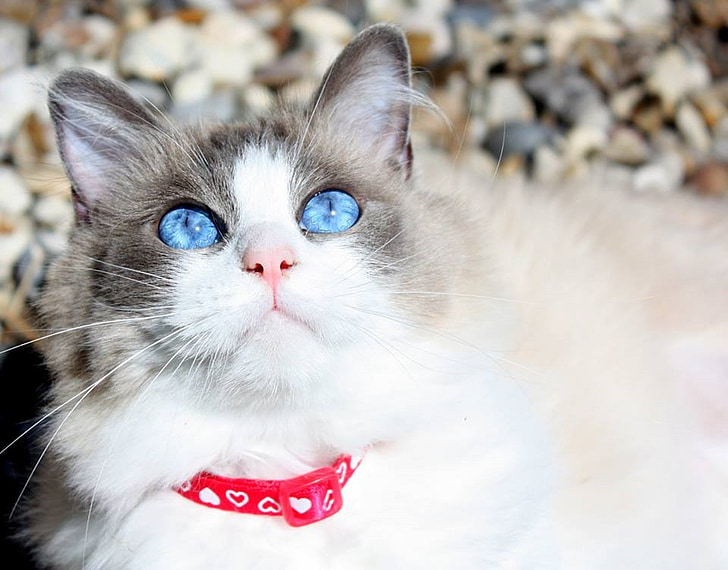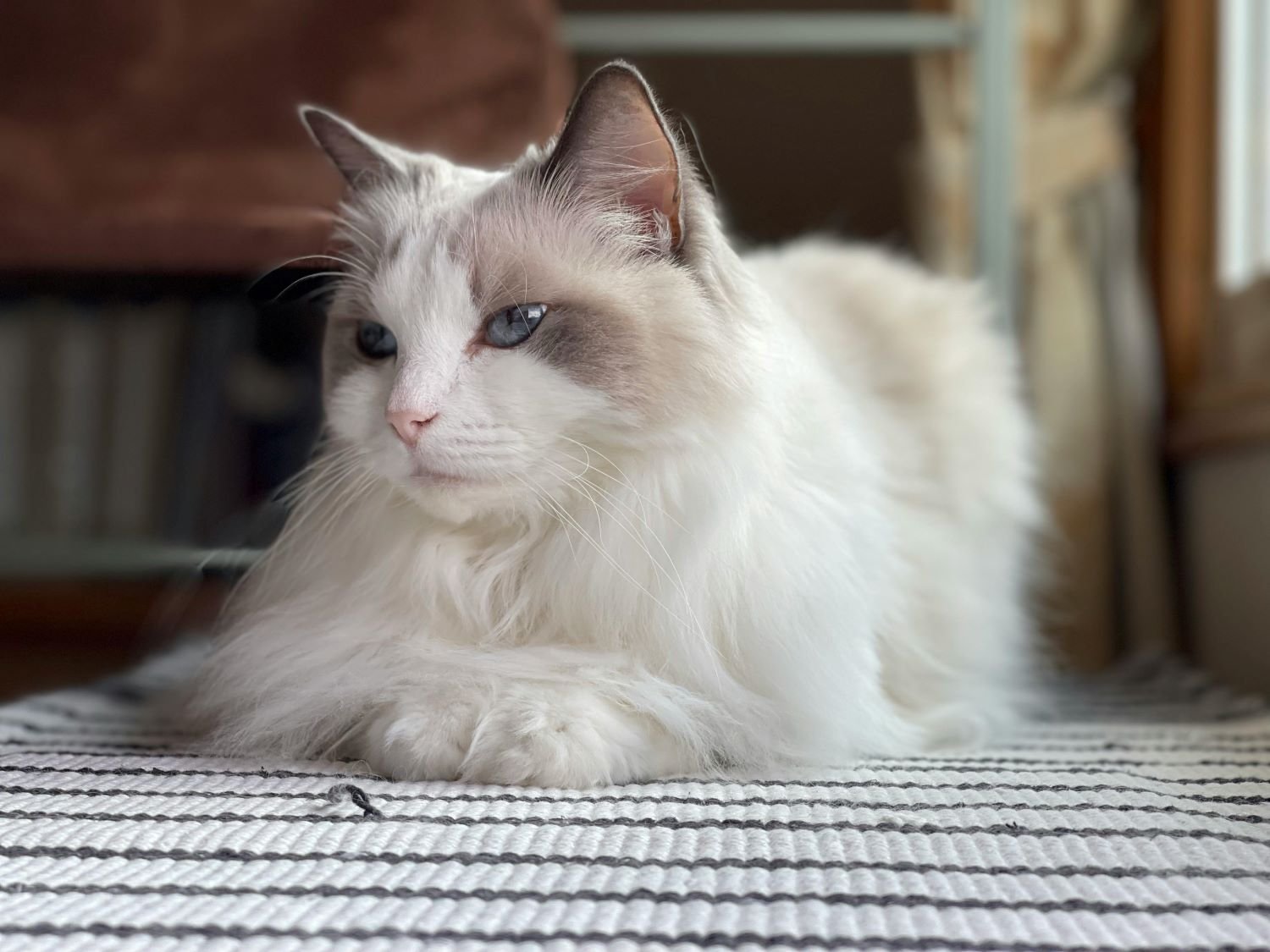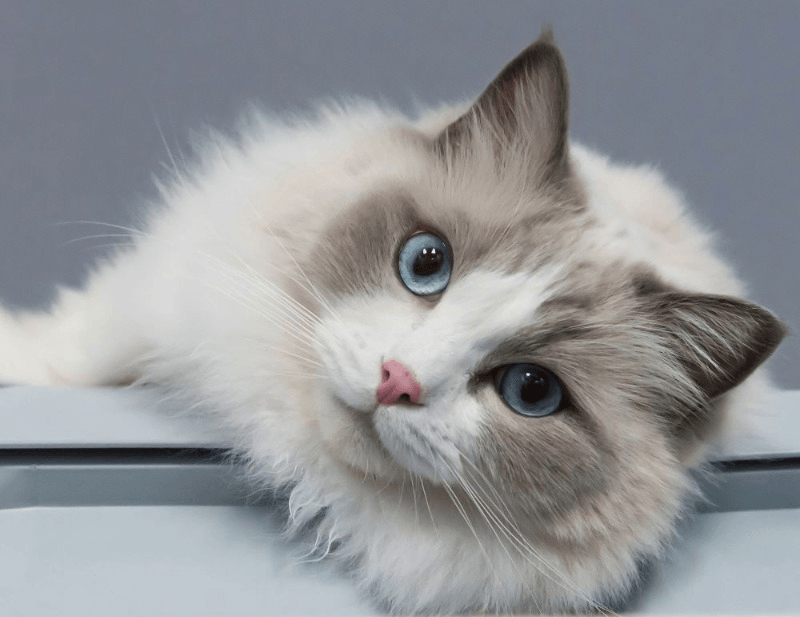The Ragdoll cat breed, known for its striking blue eyes and gentle demeanor, stands out in the feline world. Originating in the 1960s in California, these cats have earned a reputation for their docile nature and tendency to go limp when picked up, which is how they got their name. Unlike other breeds, Ragdolls are characterized by their semi-long coat, large stature, and affectionate behavior towards their owners. They are often described as dog-like in their loyalty, following family members from room to room. This breed’s unique combination of physical attributes and personality traits makes it a fascinating subject for potential pet owners seeking a companion that is both visually stunning and emotionally engaging.
Key Takeaways
- Ragdoll cats are known for their gentle and friendly nature, making them excellent companions for families and individuals alike.
- Regular veterinary check-ups and a balanced diet are crucial for maintaining the health of a Ragdoll cat, as they can be prone to specific health issues such as heart disease.
- Providing a comfortable and stimulating environment is key to living harmoniously with a Ragdoll cat, including access to scratching posts, toys, and safe outdoor spaces if possible.
- When considering adding a Ragdoll cat to your family, seek reputable breeders or adoption agencies that can provide health clearances and support for the cat’s specific needs.
- Educating yourself on the breed’s characteristics and care requirements before adopting can help ensure a long and happy relationship with your Ragdoll cat.
- Remember, adopting a pet is a long-term commitment that should be made with careful consideration of how the pet will fit into your lifestyle and home.
Breed Overview
History
The Ragdoll cat breed traces its roots back to California in the 1960s. It was here that Ann Baker, a breeder, laid the foundation for this unique breed. She focused on creating cats with a gentle demeanor and a plush coat. This selective breeding program emphasized personality as much as physical appearance.
Ragdolls quickly captured hearts around the globe. Today, they stand as one of the most beloved cat breeds worldwide. Their rise in popularity is a testament to their appealing nature and striking looks.
Physical Characteristics
Ragdolls are known for their large size and semi-long coat. Their striking blue eyes are perhaps their most captivating feature. These cats come in various color patterns, including bi-color, van, mitted, and colorpoint. This variety adds to their appeal.
They possess a muscular build beneath their soft, silky fur. This combination of strength and softness makes them uniquely attractive among cat breeds.
Personality and Temperament
Ragdolls are celebrated for their gentle and calm nature. They’re often likened to dogs due to their loyalty towards owners. This breed is known for going limp when picked up, which contributed to the name “Ragdoll.”
Their sociability extends deeply into family life, making them excellent companions. They form strong bonds with family members and thrive on affection and interaction.
Health And Care
Common Health Issues
Ragdoll cats are known for their gentle nature and striking blue eyes, but they also have specific health concerns. Hypertrophic cardiomyopathy (HCM) and polycystic kidney disease (PKD) are two genetic conditions often found in this breed. Regular check-ups with a veterinarian are crucial to catch signs early. It’s essential to buy from breeders who test for these diseases. This ensures the long-term health of your Ragdoll cat.
Dietary Needs
A balanced diet is vital for Ragdoll cats. They need high-quality protein to match their large size and energy needs. However, owners must be careful not to overfeed them, as they can easily become obese. Consulting a veterinarian can help create a tailored diet plan. This is especially important for those with specific health issues.
Exercise Requirements
Despite their laid-back nature, Ragdolls require regular exercise. Daily play sessions help keep them active and prevent boredom. Interactive toys and puzzles cater to their intelligent minds. Regular physical activity is key to avoiding obesity and ensuring their overall well-being.
Grooming
Grooming plays a significant role in a Ragdoll’s care routine. Their long, luxurious coat needs brushing several times a week to avoid tangles and mats. While they don’t need frequent baths, occasional ones keep their fur in top condition. Nail trimming and ear cleaning are also part of maintaining their hygiene.
Living with a Ragdoll Cat
Training and Socialization
Early socialization is crucial for Ragdoll cats. They need to be familiar with various people, pets, and environments from a young age. This exposure helps them become well-adjusted adults. It’s also essential to use positive reinforcement techniques when training them. Due to their sensitive nature, they respond best to rewards like treats or praise rather than punishment.
Ragdolls have the potential to learn tricks and commands which can significantly enhance their sociability and adaptability. Teaching them simple commands or tricks not only stimulates their mind but also strengthens the bond between cat and owner.
Environment
Creating a safe indoor environment is vital for Ragdoll cats. They are curious by nature but lack street smarts, making outdoor hazards particularly dangerous for them. To keep them entertained indoors, providing ample space for play and exploration is key. Cat trees and perches offer great opportunities for physical activity and satisfy their climbing instincts.
Moreover, it’s beneficial to establish a quiet retreat area where they can relax undisturbed. This spot should be cozy and away from the household hustle and bustle, giving them a sense of security and peace.
Activities They Enjoy
Ragdolls particularly enjoy interactive play sessions with their owners. Activities such as fetch or engaging with puzzle toys stimulate their minds and keep them physically active. These activities not only entertain them but also provide mental stimulation.
Their love for companionship is profound; they often follow their owners around the house wanting to be part of every activity. Including them in family activities reinforces this bond. Structured playtime is especially beneficial as it allows for quality bonding time between Ragdolls and their owners while ensuring they stay active.

Breeder Advice and Adoption
Choosing a Breeder
When looking for a Ragdoll breeder, health screenings and health guarantees are paramount. A reputable breeder will always conduct thorough health checks on their breeding cats to ensure they are free from genetic conditions common in Ragdolls. They should also offer a health guarantee for the kittens they sell. This shows they stand behind the health and well-being of their animals.
It’s wise to ask for references from previous buyers and make a point of visiting the breeding facility. This visit allows you to see the conditions in which the cats are raised and meet the parent cats. The environment should be clean, spacious, and enriching for the cats. Observing the parent cats offers clues about future health and temperament of your kitten.
Choose a breeder who is not just selling cats but is genuinely passionate about the Ragdoll breed. They should be knowledgeable about the breed’s history, characteristics, and care requirements. Their commitment ensures you’re getting a cat from someone who aims to improve and preserve the breed’s quality.
Adoption
Adopting a Ragdoll cat from shelters or rescue organizations can be incredibly rewarding. These places sometimes have Ragdolls or Ragdoll mixes who need homes. Adopting an adult cat has its perks, such as knowing their personality and health status upfront. Adult cats often adapt well to new environments, making them great companions from day one.
Before bringing a Ragdoll home, whether through purchase or adoption, ensure your home is ready for this furry addition. Considering what was discussed about living with these gentle giants, prepare your space with plenty of vertical areas for climbing and soft spots for lounging. Introduce family members gradually to avoid overwhelming your new pet.
Top Cat Grooming Tools (Click Here)
Final Remarks
The Ragdoll cat breed, with its distinctive features and temperament, offers a unique companionship to those willing to meet its health, care, and living requirements. This breed stands out for its docile nature and striking blue eyes, necessitating a specific approach to health maintenance, daily care, and the environment it lives in. The considerations for choosing a breeder or adoption also play a crucial role in ensuring the well-being of these cats. It is imperative for prospective owners to understand the commitment involved in owning a Ragdoll, from providing appropriate healthcare to creating an enriching living space that caters to their physical and emotional needs.
For individuals looking to welcome a Ragdoll into their homes, it is advisable to thoroughly research and prepare for the responsibility. Engaging with reputable breeders or adoption centers can ensure a healthy and happy start for both the cat and its owner. Embracing the journey with knowledge and readiness will lead to a rewarding relationship with this enchanting breed.
Frequently Asked Questions
What is the lifespan of a Ragdoll cat?
Ragdoll cats typically live between 12 to 15 years, with proper care and regular veterinary check-ups contributing to their longevity.
How should I care for my Ragdoll’s coat?
Ragdoll cats have semi-long, plush coats that require regular grooming. Brushing them two to three times a week helps prevent matting and reduces shedding.
Are Ragdoll cats good with children and other pets?
Yes, Ragdolls are known for their gentle and placid temperament, making them excellent companions for children and good housemates with other pets when properly introduced.
What health issues are common in Ragdoll cats?
Common health issues include hypertrophic cardiomyopathy, kidney problems, and potential for obesity. Regular health screenings can help catch and manage these conditions early.
Can Ragdolls live happily in apartments?
Absolutely. Ragdolls are indoor cats that adapt well to apartment living due to their calm nature as long as they have enough space to play and explore safely.
What advice do breeders give about adopting a Ragdoll cat?
Breeders often advise ensuring you’re ready for a long-term commitment, choosing a reputable breeder, and considering the cat’s personality to ensure it fits with your lifestyle.
Is it necessary to keep my Ragdoll indoors at all times?
Yes, keeping your Ragdoll indoors is recommended to protect them from external dangers such as traffic, diseases from other animals, and theft due to their docile nature.







0 Comments